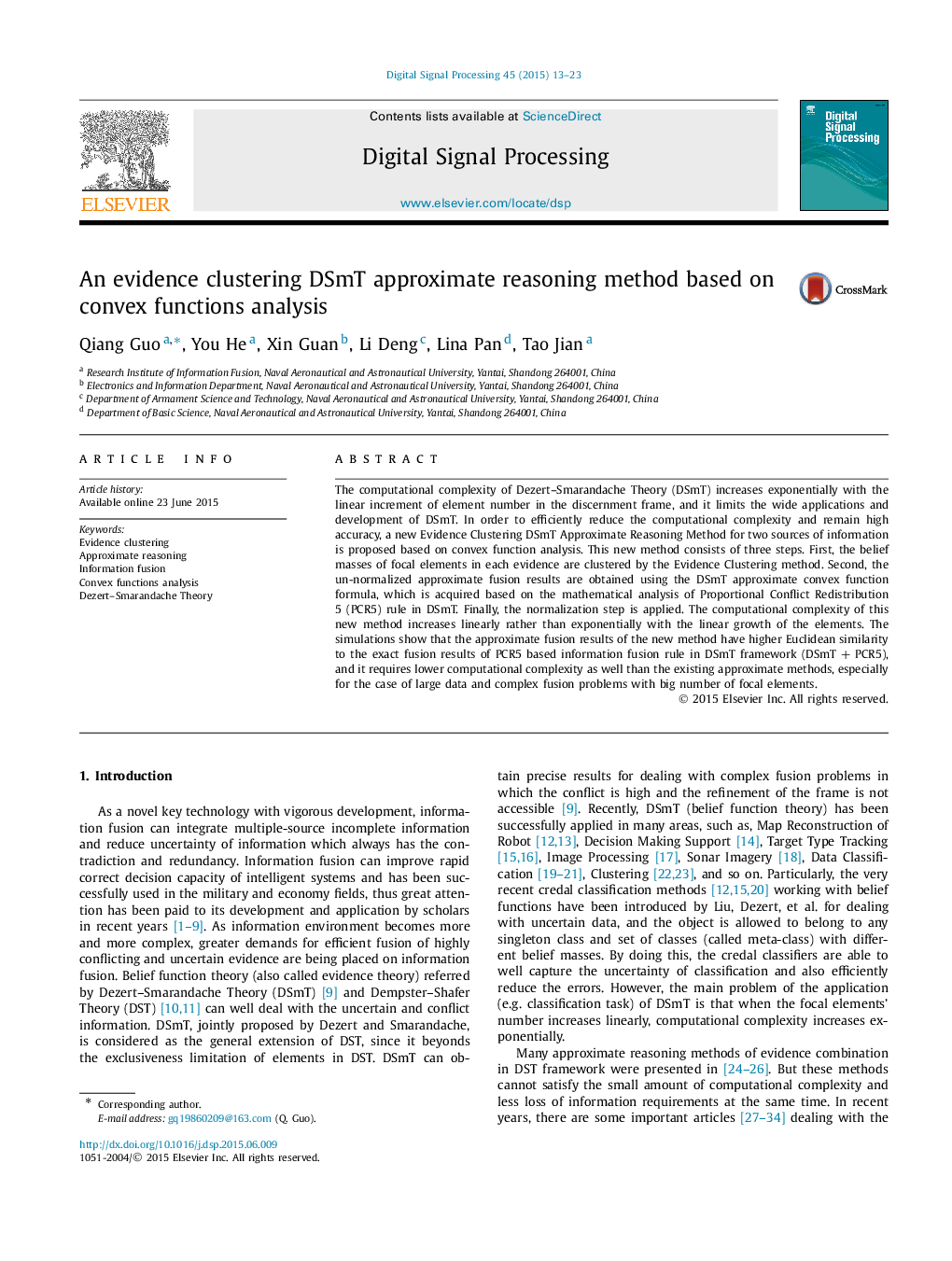| Article ID | Journal | Published Year | Pages | File Type |
|---|---|---|---|---|
| 6952035 | Digital Signal Processing | 2015 | 11 Pages |
Abstract
The computational complexity of Dezert-Smarandache Theory (DSmT) increases exponentially with the linear increment of element number in the discernment frame, and it limits the wide applications and development of DSmT. In order to efficiently reduce the computational complexity and remain high accuracy, a new Evidence Clustering DSmT Approximate Reasoning Method for two sources of information is proposed based on convex function analysis. This new method consists of three steps. First, the belief masses of focal elements in each evidence are clustered by the Evidence Clustering method. Second, the un-normalized approximate fusion results are obtained using the DSmT approximate convex function formula, which is acquired based on the mathematical analysis of Proportional Conflict Redistribution 5 (PCR5) rule in DSmT. Finally, the normalization step is applied. The computational complexity of this new method increases linearly rather than exponentially with the linear growth of the elements. The simulations show that the approximate fusion results of the new method have higher Euclidean similarity to the exact fusion results of PCR5 based information fusion rule in DSmT framework (DSmT + PCR5), and it requires lower computational complexity as well than the existing approximate methods, especially for the case of large data and complex fusion problems with big number of focal elements.
Related Topics
Physical Sciences and Engineering
Computer Science
Signal Processing
Authors
Qiang Guo, You He, Xin Guan, Li Deng, Lina Pan, Tao Jian,
